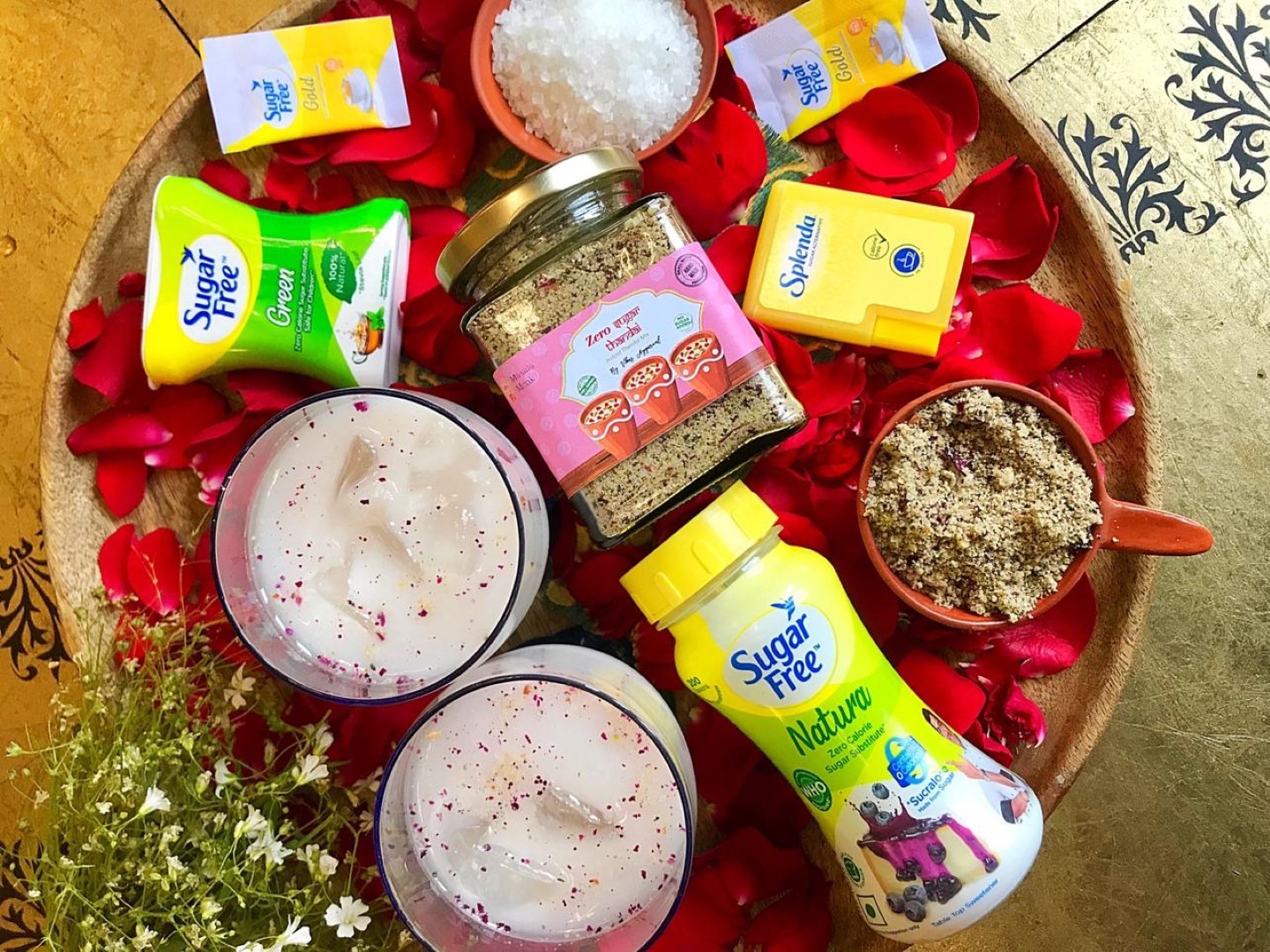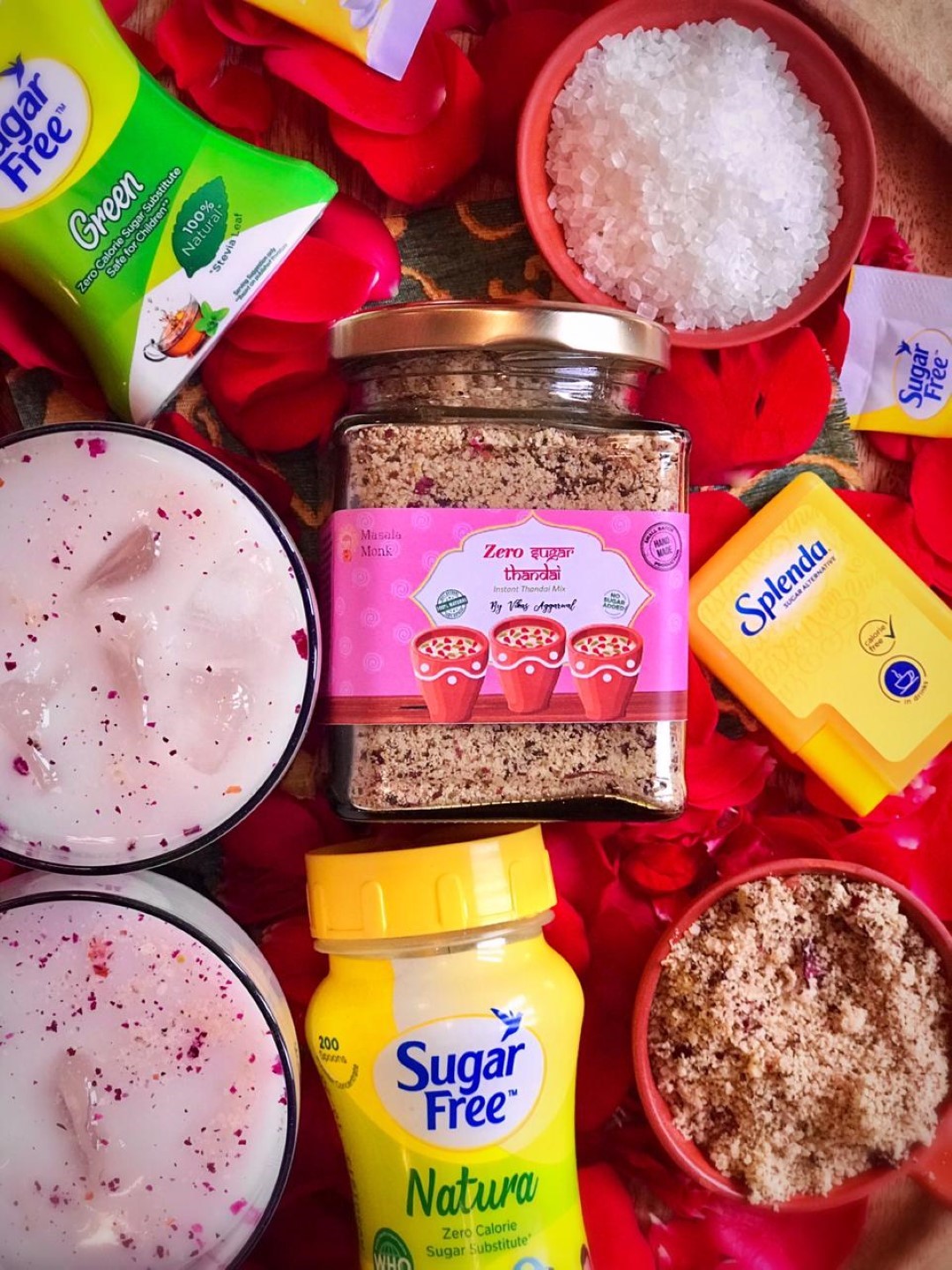
1. Introduction: The Ubiquity of Aspartame
In today’s health-conscious era, the word aspartame has become almost synonymous with the broader debate surrounding artificial sweeteners. Found in a myriad of products, from your favorite diet soda to that sugar-free gum you chew daily, aspartame’s presence is undeniable. But what exactly is this zero-calorie sweetener that has found its way into so many products?
– What is Aspartame? Aspartame is a low-calorie artificial sweetener that’s about 200 times sweeter than sucrose (table sugar). It’s a compound made from two amino acids: aspartic acid and phenylalanine. Due to its intense sweetness, only a tiny amount is needed, making it a popular choice for many sugar-free and “diet” products.
– The Aspartame Debate: The internet is rife with discussions, from platforms like Reddit to health forums, debating the safety and health implications of aspartame. While some hail it as a savior for diabetics and those watching their caloric intake, others raise concerns about potential health risks.
2. Soft Drinks: The Fizzy Controversy
Soft drinks, especially their diet versions, have long been at the epicenter of the aspartame debate. With the global soft drink market being a multi-billion dollar industry, the choice of sweeteners can influence not just taste but also public perception.
– Coca Cola’s Stance:
- Classic Coca Cola: The original, with its iconic taste, remains untouched by aspartame, relying on its traditional sugar or high fructose corn syrup formula.
- Diet Variants: Diet Coke and Coke Zero, in their quest to cater to a calorie-conscious audience, have incorporated aspartame. This has led to numerous online discussions, especially on platforms like Reddit, where consumers share their views and experiences.
– Pepsi’s Play:
- Pepsi Max: This bold-flavored variant combines the sweetness of aspartame with acesulfame K, another artificial sweetener, to achieve its signature taste.
- Diet Pepsi: In response to consumer demand and the ongoing aspartame debate, Pepsi introduced an aspartame-free version. However, the original aspartame-sweetened formula remains a choice for many.
– Other Players in the Fizzy Arena:
- Sprite & Fanta: The diet versions of these popular sodas often contain aspartame, leading to inquiries about their content. For instance, Sprite Zero, with its crisp lemon-lime flavor, uses aspartame to maintain its sweetness without the calories.
- Dr. Pepper: A unique flavor in the soda world, Dr. Pepper’s diet version incorporates aspartame, making it a topic of discussion among its loyal fan base.
– The Global Perspective: Different regions have varying stances on aspartame. For instance, in Europe, aspartame goes by the identifier E951. Its use is approved by major health organizations, but the debate continues, with consumers worldwide voicing their opinions and concerns.
3. Chewing Gum: A Sticky Situation
Chewing gum, a staple in many people’s daily routine, has seen a significant shift towards sugar-free options in recent years. Aspartame has played a pivotal role in this transformation, but its inclusion hasn’t been without controversy.
– The Aspartame Advantage in Gum:
- Calorie Reduction: Aspartame’s intense sweetness means less is required to achieve the desired taste, leading to fewer calories per stick or pellet.
- Dental Benefits: Sugar-free gums, often sweetened with aspartame, are promoted by dentists for their ability to stimulate saliva and reduce plaque acidity, potentially reducing the risk of cavities.
– Popular Brands and Aspartame:
- PUR Gum: Known for its natural ingredients, PUR Gum offers aspartame-free options, responding to a segment of consumers looking for alternatives. Their products, available in various flavors, have garnered attention, leading many to search for PUR gum near them or delve into the specifics of PUR gum ingredients.
- Trident: A major player in the gum industry, Trident offers both aspartame-containing and aspartame-free options. Their diverse range caters to a broad audience, but it’s always recommended to check the packaging for specific sweetener details.
- Extra and Orbit: These brands, while popular, have faced questions like “Does Extra gum contain aspartame?” or “Is Orbit gum aspartame-free?”. The answer varies by product and region, emphasizing the importance of label-reading.
– The Aspartame-Free Movement: With increasing consumer awareness and the demand for more natural products, several brands have introduced aspartame-free gum options. Brands like Spry and Glee Gum have joined PUR in offering alternatives for those wary of aspartame.
4. Sweeteners: Beyond the Sugar Bowl
The world of sweeteners is vast and varied, with aspartame being just one of many options available to consumers. Its presence in tabletop sweeteners, baking products, and even some unexpected places has made it a household name.
– Aspartame vs. Others:
- Sucralose: Another high-intensity artificial sweetener, sucralose is often compared to aspartame. While both are used in a variety of products, they have distinct chemical structures and taste profiles.
- Stevia: Derived from the leaves of the Stevia plant, this natural sweetener has gained popularity as an alternative to artificial options. However, some products combine stevia with other sweeteners, leading to questions like “Does stevia contain aspartame?”.
- Equal and Sweet’N Low: These brand-name sweeteners have become synonymous with the artificial sweetener debate. While Equal contains aspartame, Sweet’N Low does not, instead using saccharin.
– Aspartame in Baking: While aspartame’s stability at high temperatures has been a topic of discussion, certain products, like aspartame powder, are marketed for cooking and baking. However, it’s essential to follow specific guidelines and recipes to ensure the desired outcome.
– Unexpected Places: From cereals to certain medications, aspartame’s reach extends beyond the obvious. It’s always a good practice to check ingredient lists, especially if one is trying to avoid or limit aspartame intake.
5. Soft Drinks: The Fizz and the Facts
Soft drinks, often the first products associated with aspartame, have a complex relationship with this sweetener. The global demand for reduced-calorie beverages has made aspartame a key ingredient in many popular drinks.
– The Cola Controversy:
- Coca Cola and Aspartame: Coca Cola, a global beverage giant, has several products containing aspartame. Coke Zero and Diet Coke, for instance, have been at the center of discussions, with many wondering about the aspartame content in these drinks.
- Pepsi’s Perspective: PepsiCo, another major player, has had its dance with aspartame. While Diet Pepsi once removed aspartame in response to consumer demand, it was reintroduced in certain markets due to flavor preferences. This led to products like “Diet Pepsi Classic Sweetener Blend” alongside aspartame-free versions.
– Beyond Cola:
- Sprite and Aspartame: Unlike its cola counterparts, Sprite Zero is the variant that contains aspartame, while regular Sprite does not.
- Mountain Dew and Aspartame: Similar to Sprite, the diet version of Mountain Dew contains aspartame, making it a sugar-free alternative to the regular drink.
- Fanta and Aspartame: While regular Fanta is aspartame-free, certain reduced-calorie versions or regional variants might contain the sweetener.
– The Aspartame-Free Movement in Beverages: With the rise of health-conscious consumers, several brands have introduced aspartame-free soft drink options. Brands like Zevia offer sodas sweetened with stevia and monk fruit, catering to those looking for natural alternatives.
6. The Yogurt Dilemma: Sweetness vs. Health
Yogurt, a staple in many diets, often comes flavored and sweetened. Aspartame’s role in yogurt has been to provide sweetness without the added calories of sugar.
– Aspartame in Popular Brands:
- Dannon: A leading brand in the yogurt market, Dannon offers various products. Questions like “Does Dannon Light and Fit have aspartame?” arise, emphasizing the importance of checking individual product ingredients.
- Activia: Another popular brand, Activia, has faced similar queries. While many of its products are sweetened with sugar or fructose, it’s always good to check for specific variants that might contain aspartame.
– Natural vs. Artificial:
- Natural Sweetened Yogurts: Many yogurts are sweetened with natural sugars, fruits, or honey. These options provide a different nutritional profile compared to artificially sweetened variants.
- Artificially Sweetened Yogurts: Aspartame, along with other artificial sweeteners, can be found in “light” or “zero” yogurt versions, aiming to provide sweetness with fewer calories.
– Making an Informed Choice: Given the variety of yogurts available, it’s essential to understand the sweeteners used. Whether one is looking for the probiotic benefits of yogurt, a low-calorie snack, or a dessert alternative, the choice of sweetener can play a significant role in the decision-making process.
7. Chewing the Facts: Aspartame in Gum
Chewing gum, a favorite for many to freshen breath or curb cravings, often contains artificial sweeteners to provide a sweet taste without sugar. Aspartame’s role in gum is significant, given its potent sweetness and calorie-free nature.
– Popular Brands and Aspartame:
- Trident: One of the leading gum brands, Trident, has several variants that contain aspartame, making it a sugar-free chewing option.
- Extra: Another popular brand, Extra, also uses aspartame in many of its sugar-free gum options.
- PUR Gum: Marketed as a healthier alternative, PUR gum is aspartame-free and uses xylitol as its primary sweetener.
– The Aspartame-Free Movement in Gum:
- Natural Alternatives: Brands like Simply Gum and Glee Gum offer aspartame-free and naturally sweetened options for those looking to avoid artificial sweeteners.
- Benefits of Aspartame-Free Gum: Beyond just the absence of aspartame, many of these natural gums also avoid other synthetic ingredients, providing a more natural chewing experience.
– Making an Informed Choice: Whether you chew gum occasionally or daily, understanding the ingredients can help you make choices aligned with your health preferences. Always check the packaging to see if aspartame or other sweeteners are listed.
8. Aspartame in Everyday Foods
Beyond just drinks and gum, aspartame finds its way into a variety of everyday foods. From breakfast cereals to desserts, this sweetener’s presence is more common than one might think.
– Breakfast Cereals:
- Cereals with Aspartame: While many cereals are sweetened with sugar or corn syrup, some “light” or “diet” versions might contain aspartame to reduce calorie content.
- Reading Labels: Always check the ingredient list on cereal boxes to determine the type of sweetener used.
– Desserts and Sweets:
- Ice Cream: Some low-calorie or diet ice creams might use aspartame as a sweetening agent.
- Candies: Sugar-free candies, especially hard candies or mints, often contain aspartame to provide sweetness without sugar.
– Packaged Snacks:
- Aspartame in Snack Foods: While less common than in drinks or desserts, some snack foods, especially those marketed as “light” or “reduced-calorie,” might contain aspartame.
- Being a Conscious Consumer: With the diverse range of products on supermarket shelves, it’s essential to be aware and read labels, especially if you’re looking to avoid certain ingredients like aspartame.
9. Aspartame in Beverages: Beyond Sodas
While sodas are the most commonly associated beverages with aspartame, this artificial sweetener is also found in a variety of other drinks. Its calorie-free sweetness makes it a popular choice for many beverage manufacturers.
– Energy Drinks:
- Aspartame’s Role: Many energy drinks, especially those labeled as “zero-calorie” or “diet,” may contain aspartame to provide sweetness without adding calories.
- Popular Brands: While brands like Monster and Red Bull have versions with sugar, they also offer aspartame-sweetened alternatives for those watching their calorie intake.
– Flavored Water and Juices:
- Refreshing with a Twist: Flavored waters, especially those that are calorie-free, often use aspartame as a sweetening agent. Brands like Propel and some variants of Vitamin Water use aspartame.
- Juices: Some “light” fruit juices or juice cocktails might contain aspartame to reduce their calorie content.
– Tea and Coffee Products:
- Ready-to-Drink: Bottled iced teas or coffee drinks, especially those labeled as “diet,” might contain aspartame as a sweetener.
- Mixes: Instant tea or coffee mixes that are sweetened might also use aspartame.
10. The Controversy: Aspartame and Health Concerns
Aspartame, despite its widespread use, has been the subject of numerous health debates and concerns over the years. While many studies have deemed it safe for consumption, some groups and individuals remain skeptical.
– FDA’s Stance:
- Approval and Monitoring: The U.S. Food and Drug Administration (FDA) has approved aspartame for use and continues to monitor its safety. They’ve established an acceptable daily intake (ADI) for aspartame, which is far above what most people would consume in a day.
- Reports and Reviews: Over the years, the FDA has reviewed numerous studies on aspartame and has consistently found it to be safe for the general population.
– Common Health Concerns:
- Phenylketonuria (PKU): One of the primary health concerns with aspartame is for individuals with PKU, a rare genetic disorder. Aspartame breaks down into phenylalanine in the body, which can be harmful to those with PKU.
- Other Concerns: Over the years, aspartame has been linked (often inconclusively) to various health issues, including headaches, allergies, and even more severe claims like cancer. However, most reputable health organizations maintain that aspartame, when consumed within recommended limits, is safe.
– The Importance of Personal Research: Given the varied opinions on aspartame, it’s crucial for consumers to do their research, consult with healthcare professionals, and make informed decisions based on their health needs and preferences.
11. Aspartame in Everyday Foods: More Than Just Drinks
Aspartame’s reach extends beyond beverages. Its calorie-free sweetness has made it a staple in many everyday foods, often without consumers realizing it.
– Chewing Gum:
- Sweetness that Lasts: Many sugar-free gums use aspartame to provide long-lasting sweetness without the stickiness that sugar can cause.
- Popular Brands: Trident, Orbit, and Extra are just a few of the many brands that offer aspartame-sweetened gum options.
– Desserts and Sweets:
- Low-Calorie Indulgence: From sugar-free ice creams to gelatin desserts, aspartame is often the sweetener of choice for those looking to indulge without the added calories.
- Yogurts: Some light or diet yogurts, especially fruit-flavored ones, might contain aspartame to enhance their sweetness without adding sugar.
– Breakfast Cereals:
- A Sweet Start: Some cereals, especially those marketed as “low sugar” or “diet,” might use aspartame as a sweetening agent.
12. Aspartame’s Alternatives: Other Sweeteners in the Market
With the ongoing debate around aspartame, many consumers seek alternatives. The market has responded with a variety of other artificial and natural sweeteners.
– Stevia:
- Natural Origins: Derived from the leaves of the Stevia plant, this sweetener is often touted as a natural alternative to aspartame.
- Usage: Stevia is commonly found in diet sodas, sugar-free desserts, and as a table-top sweetener.
– Sucralose:
- Heat Stable: Unlike aspartame, sucralose remains stable at high temperatures, making it suitable for cooking and baking.
- Brands: Splenda is one of the most recognized brands that use sucralose.
– Equal and Sweet’N Low:
- Blend of Sweeteners: These brands often use a combination of sweeteners, including aspartame, to achieve their signature taste.
- Applications: Commonly used in both beverages and foods, and also available as table-top sweeteners.
– Natural Sugars:
- Honey, Agave, and Maple Syrup: For those looking to avoid artificial sweeteners altogether, these natural sugars can serve as alternatives, though they do contain calories.
13. The Aspartame-Coca Cola Connection: A Popular Choice
Coca Cola, one of the world’s most recognized brands, has had a long-standing relationship with aspartame. The sweetener has been instrumental in the company’s efforts to offer low-calorie beverage options.
– Diet Coke:
- A Pioneer: Introduced in 1982, Diet Coke was one of the first major beverages to use aspartame as its primary sweetener. It quickly became a hit among those seeking a calorie-free cola experience.
- Current Formulation: While the formula has seen variations over the years, aspartame remains a key ingredient in many regions.
– Coke Zero Sugar:
- A Modern Twist: Launched as a successor to the original Coke Zero, this variant promises the classic Coke taste with zero sugar and calories. Aspartame, combined with acesulfame potassium, delivers its sweetness.
- Popularity: Its taste profile has made it a favorite among younger consumers who are calorie-conscious.
– Controversies and Changes:
- Reformulations: Over the years, Coca Cola has tweaked its formulas in response to consumer feedback and changing regulations. This has sometimes involved adjusting the aspartame content.
- Global Variations: The aspartame content and combination with other sweeteners can vary based on regional preferences and regulations.
14. Fizzy Drinks Without Aspartame: Exploring the Alternatives
While aspartame is prevalent in many diet sodas, there’s a growing demand for alternatives. Brands are responding by formulating beverages without aspartame.
– Pepsi Max:
- Distinct Formula: Unlike its counterpart Diet Pepsi, Pepsi Max uses a blend of aspartame and acesulfame potassium for sweetness. However, in some regions, Pepsi Max has been reformulated without aspartame.
- Taste Profile: It’s marketed as having a bolder flavor compared to other diet colas.
– Natural Soda Brands:
- Organic Ingredients: Brands like Zevia use natural sweeteners like stevia to offer a fizzy experience without artificial additives.
- Flavor Range: These brands often boast a wide range of flavors, from classic cola to ginger root beer.
– Sparkling Waters:
- Calorie-Free Refreshment: Brands like LaCroix and Perrier offer flavored sparkling waters without any sweeteners, providing a refreshing alternative to sodas.
- Growing Market: The demand for unsweetened, naturally flavored beverages is on the rise, leading to increased options in this category.
5. IARC and Aspartame: The Verdict on Carcinogenicity
The International Agency for Research on Cancer (IARC) is a specialized agency of the World Health Organization (WHO) that evaluates the carcinogenicity of various substances. Aspartame has been under the scanner for potential cancer risks.
– Initial Concerns:
- Animal Studies: Earlier studies on rodents suggested a potential link between aspartame and certain types of cancers. However, the doses used in these studies were significantly higher than typical human consumption.
- Human Studies: Large-scale epidemiological studies have not found a consistent link between aspartame consumption and cancer in humans.
– IARC’s Stance:
- After a thorough evaluation, IARC has not classified aspartame as a carcinogen. It’s essential to note that their assessments are based on available scientific evidence, which is continually evolving.
16. Yogurt and Aspartame: A Sweet Pairing
Yogurt, a staple in many diets, often contains added sugars to enhance its taste. Aspartame offers a calorie-free alternative for sweetening.
– Benefits of Aspartame in Yogurt:
- Calorie Reduction: Aspartame allows brands to produce low-calorie or calorie-free yogurts without compromising sweetness.
- Texture and Consistency: Unlike some sweeteners, aspartame doesn’t alter the yogurt’s texture, ensuring a creamy mouthfeel.
– Popular Brands:
- Many leading yogurt brands offer ‘light’ or ‘diet’ versions sweetened with aspartame. Always check the ingredient list if you’re trying to avoid or seek out aspartame.
17. Aspartame Products List: Beyond Beverages
Aspartame’s reach extends beyond beverages. It’s found in a variety of food products, catering to those watching their calorie intake.
– Chewing Gums: Many sugar-free gums use aspartame to deliver sweetness without calories. – Desserts: From gelatin desserts to ice creams, aspartame finds its way into many sweet treats. – Baking: Aspartame-based sweeteners are available for baking, though they might not always replicate sugar’s caramelizing properties. – Cereals: Some low-calorie cereals might contain aspartame for added sweetness.
18. Aspartame Sweetener Brands: Know What You’re Buying
Several brands produce aspartame-based sweeteners, each with its unique formulation and selling points.
– Equal: One of the most recognized brands, available in blue packets. – NutraSweet: Another popular brand that has been in the market for decades. – Store Brands: Many supermarkets offer their version of aspartame-based sweeteners, often at a lower price point. – Specialty Brands: Some brands cater to specific dietary needs, ensuring their products are gluten-free or suitable for certain medical conditions.
19. Aspartame in Chewing Gum: A Common Ingredient
Chewing gum has long been a favorite for many to freshen breath or curb cravings. With the rise of health-conscious consumers, many gum manufacturers have turned to aspartame as a sugar substitute.
– Why Aspartame in Gum?
- Zero-Calorie Sweetness: Aspartame provides the sweetness without the calories, making it a preferred choice for those watching their weight.
- Long-Lasting Flavor: Aspartame doesn’t break down as quickly as sugar, ensuring the gum retains its flavor for longer.
– Brands to Look Out For:
- Many leading gum brands, such as Trident and Orbit, offer sugar-free versions that contain aspartame. It’s always a good practice to check the ingredients if you have specific dietary preferences.
20. Diet Sodas: The Aspartame Debate
Diet sodas have been a popular choice for those looking to enjoy fizzy drinks without the added sugars. Aspartame plays a significant role in these beverages.
– The Popularity of Diet Sodas:
- Calorie Conscious: With zero calories, diet sodas appeal to those trying to maintain or lose weight.
- Taste Profile: Many consumers prefer the taste of diet sodas over their sugary counterparts.
– Controversies and Myths:
- Over the years, there have been numerous debates about the safety of aspartame in diet sodas. While some studies raised concerns, regulatory bodies like the FDA have deemed aspartame safe for consumption in regulated amounts.
21. Aspartame-Free Alternatives: Exploring Other Sweeteners
For those who prefer to avoid aspartame, there are numerous alternative sweeteners available in the market.
– Stevia: A natural sweetener derived from the leaves of the Stevia plant. It’s calorie-free and much sweeter than sugar. – Sucralose: Another popular artificial sweetener, often recognized by the brand name Splenda. – Xylitol: A sugar alcohol that’s naturally found in many fruits and vegetables. It’s often used in sugar-free gums and candies.
– Making the Choice:
- Each sweetener has its taste profile, benefits, and potential side effects. It’s essential to research and choose what aligns with your health goals and taste preferences.
22. Aspartame in Everyday Foods: Where Else Is It Lurking?
Aspartame’s use isn’t limited to beverages and gums. It’s found in a variety of everyday foods that might surprise you.
– Breakfast Cereals: Some low-calorie or diet cereals might use aspartame for added sweetness. – Frozen Desserts: Certain low-calorie ice creams and popsicles might contain aspartame. – Jams and Jellies: Sugar-free versions of these breakfast staples can contain aspartame. – Baked Goods: Some diet cookies or pastries might use aspartame as a sugar substitute.
– Being an Informed Consumer:
- Always check the ingredient list of products, especially if you have specific dietary needs or preferences. Knowing what’s in your food empowers you to make healthier choices.
23. Aspartame in Candy and Sweets
While aspartame is commonly associated with beverages, it’s also a prevalent ingredient in various candies and sweets, especially those labeled as “sugar-free” or “diet.”
– Sugar-Free Hard Candies: Many brands offer sugar-free versions of popular candies, using aspartame to maintain sweetness without the added calories. – Chocolates: Some diet or low-calorie chocolates might incorporate aspartame as a sugar substitute. – Gelatin Desserts: Sugar-free jello or similar products often contain aspartame to provide that sweet taste without the sugar.
24. The Global Perspective: Aspartame Usage Worldwide
Aspartame’s usage isn’t just a Western phenomenon. It’s used globally, with varying regulations and perceptions.
– Europe: The European Food Safety Authority (EFSA) has deemed aspartame safe for consumption, though individual countries might have their regulations. – Asia: Countries like Japan and South Korea have approved aspartame’s use in foods and beverages, while others have stricter regulations.
25. The Future of Aspartame
With evolving research and changing consumer preferences, the future of aspartame remains uncertain.
– New Research: As with all food additives, continuous research is being conducted on aspartame’s long-term effects. – Consumer Trends: The rise of natural sweeteners like stevia might impact aspartame’s popularity in the future.
26. Conclusion: Making Informed Choices
Aspartame, like all food additives, comes with its benefits and controversies. The key is to stay informed, understand the research, and make choices that align with your personal health goals. Whether you choose to consume products with aspartame or opt for alternatives, being knowledgeable empowers you to make the best decisions for your well-being.
Thank you for joining us on this deep dive into aspartame. We encourage you to explore further, ask questions, and engage with our community. Don’t forget to check out our previous post on Guide to Aspartame: Benefits, Risks, and Myths for a comprehensive overview. Stay tuned for more updates and insights!
Frequently Asked Questions (FAQs)
- What is aspartame and why is it used as an artificial sweetener? Aspartame is a low-calorie sweetener used to sweeten a variety of foods and drinks without adding sugar or calories.
- Is aspartame present in Coca-Cola products? Yes, some Coca-Cola products, like Diet Coke and Coke Zero, contain aspartame as a sugar substitute.
- What is Sweetex, and does it contain aspartame? Sweetex is a brand of tabletop sweeteners, and some of its products do contain aspartame.
- Are there fizzy drinks available without aspartame? Yes, there are several fizzy drinks on the market that do not contain aspartame.
- Has the International Agency for Research on Cancer (IARC) commented on aspartame? The IARC has evaluated aspartame, and it’s essential to refer to their official publications for detailed findings.
- Do yogurts contain aspartame? Some low-fat or diet yogurts might contain aspartame as a sugar substitute, but it’s always best to check the label.
- Can you provide a list of products that commonly contain aspartame? Common products include diet sodas, sugar-free gum, sugar-free desserts, and certain tabletop sweeteners.
- Which brands use aspartame in their sweeteners? Brands like Equal, NutraSweet, and some products of Sweetex use aspartame in their sweeteners.
- Is aspartame present in chewing gum? Many sugar-free gums contain aspartame as a sweetening agent.
- Are there cereals with aspartame? Some diet or low-sugar cereals might contain aspartame. Always check the ingredients list.
- Which sodas are aspartame-free? While many diet sodas contain aspartame, there are brands and specific products that offer aspartame-free options.
- Is PUR gum free from aspartame? Yes, PUR gum is an aspartame-free chewing gum brand.
- Do drinks like Pepsi Max contain aspartame? Yes, Pepsi Max is sweetened with aspartame among other sweeteners.
- What is aspartame E951? E951 is the code for aspartame used in food labeling within the European Union.
- Are there any aspartame-free drinks available? Yes, there are several beverages, both carbonated and non-carbonated, that do not contain aspartame.
- Is Stevia a better alternative to aspartame? Stevia is a natural sweetener derived from the leaves of the Stevia plant, while aspartame is synthetic. Preference varies among individuals.
- Does Diet Pepsi still contain aspartame? Diet Pepsi has versions with and without aspartame. It’s crucial to check the product labeling.
- How is aspartame produced? Aspartame is synthesized from two amino acids, aspartic acid and phenylalanine, using a chemical process.
- Are there any health concerns related to aspartame? There have been debates and studies on aspartame’s safety, but major health organizations have deemed it safe for consumption in recommended amounts.
- Which foods and drinks should I check for aspartame content? Common products include diet sodas, sugar-free desserts, tabletop sweeteners, sugar-free gum, and certain flavored waters.
Blog Tags: aspartame, artificial sweetener, Coca-Cola, Sweetex, fizzy drinks, IARC, yogurt, aspartame products, sweetener brands, chewing gum, cereals, diet soda, PUR gum, Pepsi Max, E951, Stevia, Diet Pepsi, health concerns, sugar-free.














